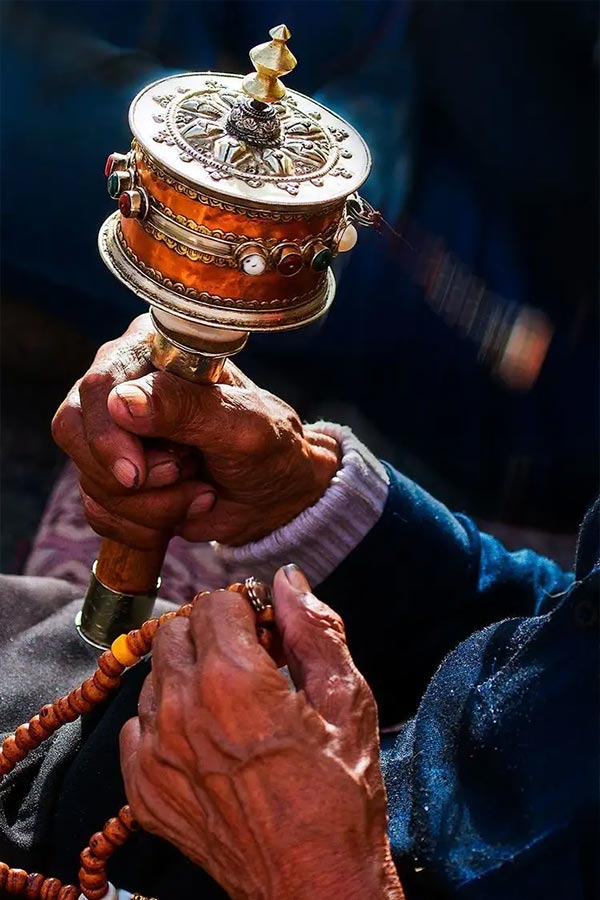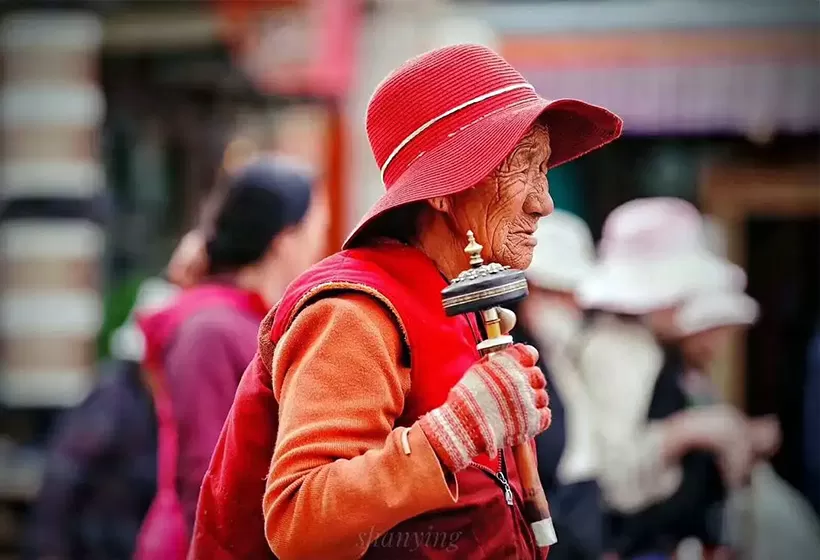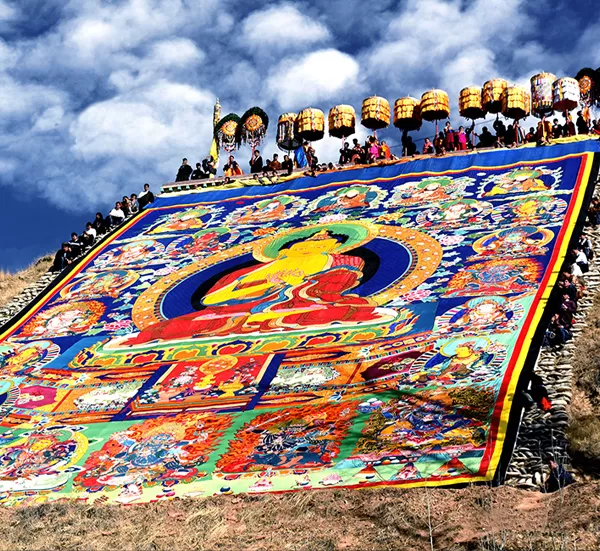Tibet Local culture, customs and festivals
The Tibet Autonomous Region, abbreviated as "Tibet", is located in the southwestern part of the People's Republic of China, on the southwestern portion of the Qinghai-Tibet Plateau, which is known as the "Roof of the World". With an average altitude of over 4,000 meters, Tibet is renowned for its unique geological features and natural landscapes. The region also boasts a distinctive array of social and cultural sights, including more than 2,700 temples at its historical peak. Additionally, Tibet is home to numerous palaces, gardens, castles, fortresses, ancient tombs, and steles.
Brief History
In ancient times, six major clans were formed in the Tibetan region.
In the early 7th century, Songtsen Gampo unified the Tibetan Plateau and established the Tibetan Empire, also known as Tubo. During this period, Tibet began to interact with the central Chinese dynasties. Through alliances and marriages with the Tang Dynasty, such as the marriages of Princess Wencheng and Princess Jincheng to Tibetan kings, Chinese culture was introduced to Tibet, leading to significant development in the region.
In 1247, the Liangzhou Prefecture Talks succeeded, leading to the establishment of the Sakya local government. Tibet then began to be incorporated into Chinese territory.
In 1271, the Mongol declared the Yuan Dynasty, and in 1279, it established a unified central government. Tibet became an administrative region under the direct governance of the Yuan central government.
In 1727 Qing Dynasty, the position of the Amban (grand minister resident of Tibet) was established to oversee all of Tibet, representing the central government in supervising Tibetan local administration. In 1791, the Qing government stationed troops in Tibet and decreed that the Amban and the Dalai Lama jointly manage Tibetan affairs.
On May 23, 1951, the Central People's Government and the local government of Tibet signed an agreement in Beijing, leading to the peaceful liberation of Tibet.
On September 1, 1965, the Tibet Autonomous Region was officially established, with its capital in Lhasa.
Religious Culture
Tibet is renowned worldwide for its unique religious beliefs and rich cultural traditions, making it a shining gem in the treasure trove of Chinese culture. On this mysterious and beautiful land, Buddhism and Tibetan Buddhism have merged and developed, and traditional Tibetan culture has been preserved and flourished, forming the distinctive religious beliefs and cultural traditions of Tibet.
Tibetan Buddhism encompasses beliefs in reincarnation, karma, liberation, and compassion. The ultimate goal is for everyone to achieve Buddhahood, making the salvation of all beings the core philosophy of Tibetan Buddhism.
Tibetan culture is closely intertwined with religion, and religious culture is evident in various aspects of Tibetan society, including clothing, art, and architecture. The rituals of Tibetan devotees, such as pilgrimage, chanting, and releasing animals, are ways for them to communicate with deities, expressing reverence and devotion.
Tibetan belief is not just a religious faith; it is an indispensable part of Tibetan people's lives. It has a profound impact on Tibetan culture, social structure, and the spiritual world of the populace. It teaches people to respect nature and value harmony, providing spiritual support and comfort. In the face of life's hardships, it offers the Tibetan people strong faith and hope.
Ethnic Culture
The Tibet Autonomous Region is the area with the highest concentration of Tibetan residents in China, accounting for 45% of the national Tibetan population and approximately 90% of the local population. Tibetan culture is ancient and rich, with distinctive ethnic and regional characteristics, and Tibetan Buddhism is the core of Tibetan culture.
The Tibetan people have their own language and script. Tibetan belongs to the Tibeto-Burman branch of the Sino-Tibetan language family. The written Tibetan language, which is still in use today, was developed in the early 7th century based on ancient Sanskrit and scripts from the Western Regions.
Tibetan clothing for both men and women remains traditional and complete. Different regions have distinct styles of dress. Men's clothing is robust and bold, while women's attire is elegant and graceful, often adorned with jewelry and precious stones, reflecting the unique style of women on the plateau.
Thangka is a unique form of painting art in Tibetan culture, characterized by its distinct ethnic features, rich religious significance, and unique artistic style. Using bright colors, Thangka paintings depict the sacred world of Buddha. Traditionally, the pigments are made entirely from precious minerals and gemstones, highlighting their sanctity. These natural materials ensure that the colors of Thangka remain vibrant and dazzling, even after hundreds of years. As a result, Thangka is regarded as a treasure of Chinese ethnic painting art.
Tibetan medicine is quite advanced, with a history of over 2,000 years. A systematic medical practice was already in place during the Tubo period. During the reign of King Trisong Detsen, Tibetan medicine experienced unprecedented development.
The Tibetans have a unique calendar system known as the Tibetan calendar, which has been in use for over a thousand years and differs from the Chinese calendar. The Tibetan people celebrate numerous festivals, such as the Butter Lantern Festival on the fifteenth day of the first Tibetan month, with incense burning and worship during the day and streets filled with lanterns at night; Sho Dun (or Shoton) Festival in late June or early July of the Tibetan calendar, featuring Tibetan opera performances and sunning Buddha ceremony; Bathing Festival in early July of the Tibetan calendar, where people bathe in rivers to cleanse diseases; and Ongkor Festival during the harvest season, celebrated to pray for a good harvest.
Diet Style
Tibetan cuisine can be broadly categorized into "red food" and "white food". "Red" refers to meat, while "white" refers to dairy products. In the summer, the diet mainly consists of "white food", and in the winter, it shifts to "red food". The flavors in Tibetan cuisine are known for being mild and balanced. Many dishes use only salt, onions, and garlic for seasoning, avoiding any spicy ingredients to preserve the original taste of the food.
Tibetan cuisine uses a wide range of ingredients, including locally sourced highland barley, beef, mutton, offal, yak butter and tvorog, in which Seasonal vegetables are rarely featured. The cuisine favors rich, flavorful, and aromatic foods that are often oily, with a preference for thick textures and sweet, crispy elements. Common cooking methods include boiling and frying, with less emphasis on stir-frying. Additionally, Tibetan cuisine incorporates influences from Mainland China, India, and Nepal, resulting in a blend of Han, Indian, and Nepalese culinary styles.
Cultural Heritage
Since ancient times, Tibet has been shrouded in mystery, little known to the outside world. Those who have had the fortune to explore this land are captivated by its magnificent and magical natural scenery. Tibet is vast and rich in resources, and its people have created a splendid Tibetan culture. Among the most mysterious of Tibetan civilizations is the Guge Kingdom, whose former glory is now hidden in silent ruins. The remains of the Gyantse Dzong, perched on a cliff, witnessing the vicissitudes of history under the setting sun. The largest royal tombs, the Tombs of the Tibetan Kings, speak of the rise and fall of the Tibetan Empire over millennia. These historical sites collectively form Tibet's rich cultural heritage, showcasing the political, economic, and cultural aspects of ancient Tibetan society.
Taboos
Do not touch the heads of Tibetan people or reach out to touch a child's head, no matter how cute they may appear. In traditional Tibetan culture, it is considered very impolite for anyone other than elders or high lamas to touch someone's head.
In Tibetan areas, if a local person sticks out their tongue at you, it is a sign of respect and welcome. You can nod in acknowledgment.
Female visitors should not shake their skirts in front of Tibetan people, as this is believed to bring bad luck to the other person.
Do not enter temples without permission, and once inside, do not smoke. You may look at the items inside, but do not touch them without consent. In some places, you should not walk counterclockwise, and in certain esoteric areas, women are not allowed to enter.
Mani stones are common in Tibet; they are carved with patterns and words, used by locals to pray for blessings. Do not step on or climb them.
Customize Your Unique Tibet Tour

Alternatively, if you would like to customize your Tibet tour, please visit our Tibet Tour Customized Center. We assure you that you will receive a reply within 24 working hours.
Informative Articles for Your Tibet Trip
 Prayer wheel, Tibet
Prayer wheel, Tibet- Tibet Travel Guide: attractions, weather, food, culture, tours, etc.
- Tibetan Culture: rich and unique
- Travel itinerary: various itineraries for your reference
- Weather: the best time and seasons to visit Tibet
- Attraction: well-selected top attractions
- Activities: Tibetan cultural immersions
- Where to Visit: top places to visit in Tibet
- Unique Perspective: top things to do in Tibet
- Food and Restaurants: what and where to eat while traveling in Tibet
- Accommodation: handpicked hotels for you
- Tibet Tours: tailor-made Tours for your reference
GREAT FAMILY CHINA TOUR
JULY 2024 We wanted to thank Grace at China Culture tour for organizing a great tour of China. We enjoyed our Beijing - Xian-Chengdu -Guilin -Yangshuo - Shanghai trip. Our local guides Bruce in Beijing, Susan in Xian, Jane in Chengdu, Mike in Guilin and Mary in Shanghai took care of us…read more details »
Teng Han L from SINGAPORE
Ready to Create a Unique Dream Travel?


